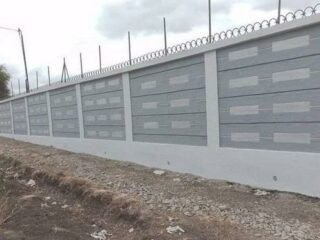Sciatica is a term used to describe pain which radiates from the low back or buttock into the leg. It is so called because pain is generally felt along the course of the sciatic nerve.
The sciatic nerve is the largest nerve in the human body. The sciatic nerve originates from several nerves in your lower back, much like small streams coming together to form a river. These nerves extend from the lumbar (lower) spine and come together between the muscles of each buttock to form the sciatic nerve. The sciatic nerve then travels down each leg before dividing into smaller branches. The sciatic nerve carries movement signals down to the muscles of the leg and sends pain, temperature, and other sensory signals up to the brain. Symptoms of “sciatica” radiate along the same path.
SYMPTOMS OF SCIATICA
The typical first symptom is pain that radiates from the lower back or buttock down one leg. The pain feels as if it is coming from the sciatic nerve in the buttocks region because of its location, but the pain most frequently originates from an irritated nerve in the lower spine.
Generally, symptoms include:
Dull, aching, shooting or “burning” pain that starts in your lower back and/or buttock and radiates down one of your legs. Back pain accompanied by leg pain is the key symptom that suggests you have sciatica rather than another type of back pain.
Neurological symptoms such as numbness, tingling, intense hot/cold sensations, electrical sensations, or others.
Muscle weakness.
Altered reflexes.
Symptoms may worsen with certain motions such as bending or twisting the low back or raising the painful leg. Symptoms may also worsen with coughing, sneezing, or straining (for example, lifting or having a bowel movement).
CAUSES OF SCIATICA
Sciatica is really a syndrome or grouping of symptoms rather than a specific injury or disease. For this reason, it can be caused by a variety of underlying mechanisms. This can be confusing and frustrating both for the patient and the healthcare professional seeking the correct diagnosis.However, sciatica is most frequently caused by irritation of spinal nerve roots (also known as nerve compression, pinched nerve or entrapment neuropathy). This particular form of entrapment is called lumbar radiculopathy, since the irritated nerves roots are located in the lumbar (lower back) portion of the spine. The irritation is most commonly from disc tissue or bone spurs that compress the nerve. Other structures in the spine can also compress nerves such as fractured bone fragments, tumors, infections, or other inflammatory processes.
Some common causes of spinal nerve root compression include:
A herniated disc – also known as a ruptured or slipped disc – in which the gel-like center of an intervertebral disc of the spine sticks out through a tear in its outer ring (called the annulus). This herniation puts pressure on the nerve root or roots located just next to the disc. Herniated discs can be occur from wear-and-tear over time or by an acute back injury.
Spinal stenosis – a narrowing of the canal that houses the spinal nerves.
(Less often) compression of the sciatic nerve itself outside of the spine:
bone or muscle injuries in or around the buttock, such as a fracture hip
diseases such as tumors or infections
pregnancy
orthopedic surgery of the hip
piriformis syndrome
RISK FACTORS FOR SCIATICA
There are many contributing factors that may increase the risk of sciatica, but one of the most important is improper spine mechanics. This includes the manner in which you perform daily activities, such as lift heavy objects and even how you sit.
SCIATICA DIAGNOSIS
The doctor will first perform a history and physical examination, and then X-rays, MRI and/or MR neurography as needed to confirm what is causing the symptoms.
TREATMENT OPTIONS FOR SCIATICA
Nonsurgical treatments may include cold or heat therapy, medications, and physical therapy. In some cases, various medication injections may also help you return to full activity. Severe cases may require spinal decompression surgery.
When acute symptoms of sciatica occur in the absence of weakness, changes in bowel or bladder function or signs of an infection (such as fevers, chills, night sweats), conservative, nonsurgical methods should be tried first.
Conservative, nonsurgical sciatica treatments
Conservative treatment is aimed at pain reduction. It may include:
Applying cold packs or heat (the choice of which usually depends on the length of time you have had symptoms).
Taking over the counter medications such as NSAIDs (nonsteroidal anti-inflammatory drugs)
Muscle relaxant medications.
Alternative therapies such as acupuncture, chiropractic care, meditation, etc.
Modification of activities. The degree of modification can vary widely depending on many different factors. Seeking advice from a physician, physical therapist or chiropractor who has expertise in this area can help to ensure a quick recovery. Your doctor or physical therapist may give you instruction about proper bending and lifting to avoid aggravating your condition.
Physical therapy.
Physical therapy and chiropractor treatments are two of the common forms of physical treatment. Ergonomic and biomechanical modifications in your daily activities can also be very helpful. Exercise physiologists and occupational therapists also have expertise in these areas.
Injections
In some cases, an epidural steroid injection or subgluteal sciatic nerve perineural injection may also help you return to full activity, but these should be performed by physicians who have had specialized training, and they should be image-guided (ultrasound-guided injections). Acupuncture treatments can also be effective for management of symptoms. Most people with sciatica get relief from their symptoms within several months.
Surgical treatment
For those patients who do not respond conservative care and experience persistent, disabling sciatica, surgery may be warranted. Your doctor will determine whether you are a candidate for surgery based on the duration and severity of symptoms. If your condition is causing cauda equina syndrome (which includes symptoms such as bladder dysfunction, incontinence or severe numbness in the buttocks) may be an indication that you should have immediate surgery.























